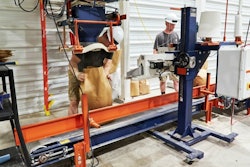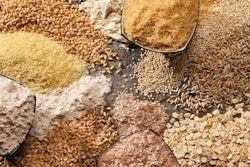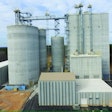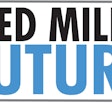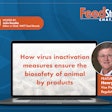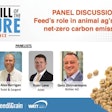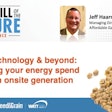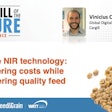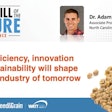The feed sector must identify, develop and recruit its future feed mill workforce with technology, data in mind
Labor shortages and finding reliable, qualified employees have long challenged animal feed producers. As new technologies come online, the feed miller of the future will require a new skill set – one beyond the basics of working in the facility and keeping the lines running.
To explore what the future feed mill workforce will look like and what employees need to bring to the table,North Carolina State University‘s associate feed milling professor Adam Fahrenholz joined the Chat.
考证了饲料行业的资质的s future workforcefromWATT Global MediaonVimeo.
Transcription of Feed Strategy Chat with Adam Fahrenholz, associate professor – feed milling, NC State University
Jackie Roembke, editor in chief, WATT Feed Brands/Feed Strategy:Hi, everyone. Welcome to Feed Strategy Chat. I’m your host, Jackie Roembke, editor in chief of WATT Feed Brands and Feed Strategy magazine.
This edition of Feed Strategy Chat is brought to you by WATT Global Media and FeedStrategy.com. FeedStrategy.com is your source for the latest news and leading-edge analysis of the global animal feed industry.
Today, we’re joined on Zoom by Adam Fahrenholz, associate professor of feed milling at NC State University. He’s here to discuss the qualifications of thefeed industry’s future workforce, and what that may look like, as well as share his thoughts on what the sector can do to support and develop these new sets of skills.
Hi, Dr. Fahrenholz. How are you today?
Adam Fahrenholz, associate professor of feed milling at NC State University:I’m good, Jackie, thanks for having me.
Roembke:Absolutely. Well, let’s get right into it.What do you think is the No. 1 challenge feed producers will face in the future? And how can the industry plan for and also mitigate that risk?
Fahrenholz:I don’t think this is going to be a surprising answer to anybody, really, I think it’s going to be a question of labor availability.
Certainly, that’s something that we’ve dealt with for a long time – and right now we deal with a lot – but it’s also just going to be, can we find the workers? I think it’s also going to be the availability of the right labor. We’re going to need people as the feed industry continues to evolve and change. We’re going to need folks that can understand how to work with automation and new technologies and understand the importance of and then do the activities necessary to comply with regulations and customer requirements, and all of these things.
Also, while still attracting the people that are literally willing to work in the feed mill. It’s hot in the summer, it’s cold in the winter. For my management staff, it’s going to be, you know, long hours getting called in on vacation, and for my operator staff, there’s going to be times where I’m going to have to get dirty as I go and fix some equipment. So how do I find those people that are willing to do that hard work in some of those environments that can be challenging, but also have those technical skills that I need, as our industry continues to get some of those advancements that are coming.
Roembke: I heard you allude to some of these earlier, but can you describe this skill set requirements for feed mill employees in the future?
Fahrenholz:是的,所以我想再一次,我能够很明显,nteract with the technology that it’s going to be, certainly a lot of that would be running automation, working with enterprise management systems, knowing how to go get data to make changes to the equipment or the processes that they’re operating, but also, and what makes it I think, maybe a little more challenging, is going to be troubleshooting, when some of that stuff doesn’t work.
当我们想到我们的正常的,我的意思是,我走了nna throw myself right in there with this, the normal folks get attracted to our industry, you know, coding and knowing how the background of this particularly advanced system works, that’s not really something that we came up understanding. So, trying to find those people that are very interested in animal ag and doing this kind of work, but also have that interest in those technologies, I think is gonna be really, really key.
Roembke: Excellent. And are there specific technologies on your radar that could significantly change how feed is manufactured?
Fahrenholz:Yeah, so I think there’s a number of them have, certainly we’re always going to see evolution in the technology of the manufacturing equipment itself, small changes to mixers, and pellet mills, and hammer mills, all that kind of good stuff. But I think the things that we most have in our forefront are those more advanced technologies. We’re gonna see continual improvements in things like real-time inventory management, through barcoding, and maybe even RFID tracking of pallets as they’re moving through a facility so that things are happening on a routine and regular basis.
We’re gonna see things potentially related to real-time analysis of quality and nutrition. So real-time in-line NIR, for example, to where I can know, I got off stream a little bit on the quality of my soybean meal, I need to adjust the formulation. We’ve seen some really cool things and we’ve done some stuff here at NC State looking at even analyzing, mixing using technology like that, and that’s an advancement that you know, we wouldn’t have even considered not that long ago.
And then just overall, throughout the entire facility, I think we’re going to see a large change in the amount of sensors that we’re doing, the data that we’re collecting, we all in academia like to throw out this phrase “big data,” even though sometimes we don’t know what to do with it. I think the feed mill is someplace that’s absolutely ripe for collecting all kinds of information that we didn’t necessarily even know we could collect before. And now we can, and then figuring out what to actually do with it.
And so, because there’ll be all those different things that are going to help us maybe take what has always been considered an art, and figuring out how to actually take some of that information and make it a science, I think all those technologies will come in and be something that will help us, but the learning curves will be kind of steep.
So that’s where we’re going to have to work to try to figure out what our best paths forward are going to be.
Roembke: Thank you so much for that insight. As an educator, what advice would you give companies concerned about recruitment and retention now and then, of course, into the years ahead?
Fahrenholz:I think first of all, and most ideally, the first thing is to figure out what that ideal employee is actually going to look like, as far as what is their experience going to be, the background? Are they coming from rural and urban settings? What are they going to know when they come in? So let’s figure that out first, what do I really want in the folks that I’m going to get? And then we figure out where we’re going to find them.
Are we going to find them through technical training programs? Are we going to find them through four-year degree programs? Do we need to invest in internships more that we’re doing, and for everybody that’s watching this, as you figure that stuff out, definitely let people like me know what the things are that you’re finding and what it is that you’re looking for so that we can help educate those people and get them out to you. Sometimes we’re guessing a little bit as to what the industry might like to have in their employees. The more information we can get, the better off we’re going to be.
And then to retain them, we have to figure out what we can do to make them want to continue to work in our industry. And I think it’s important, we don’t need to focus on the things that we’re not going to change. The environment of the feed mill is going to be what it’s going to be it’s going to be hot, and cold and dirty and dusty, we better hire people that are willing to work in that environment, OK. The hours are going to be long, there’s going to be need to feed the animals, we’re not changing any of that. And that’s a good thing. That’s, that’s what makes us who we are.
So let’s focus on the things that we can really address. And when we talk to mill managers, why have you been in this industry for 30, 40 years, we get, “I get to work with really good people and I love building a team.” I get, “I get to make a difference. I’m doing something that I know matters, because I’m helping to feed the world.” And I get, “The job security’s really great. We are always going to be feeding animals.”
So how do we focus on those things and get our employees to buy into them through incentivizing certain things, and just making sure we’re hiring the right people, so that they know what it is when they’re walking forward, and then want to stay because of those good things. And we’re building our teams around them.
Roembke:Thank you so much, Dr. Fahrenholz, and thanks to you for tuning in.
Announcing the Feed Mill of the Future digital supplement
WATT’s feed brands Feed Strategy and Feed & Grain magazines join forces to launch the monthly Feed Mill of the Future digital supplement. Each edition aims to provide animal feed industry stakeholders with forward-looking content, market insights and a spotlight on the leading-edge technologies shaping the global feed industry of tomorrow.
Subscribe today!https://bit.ly/3dWzow7






